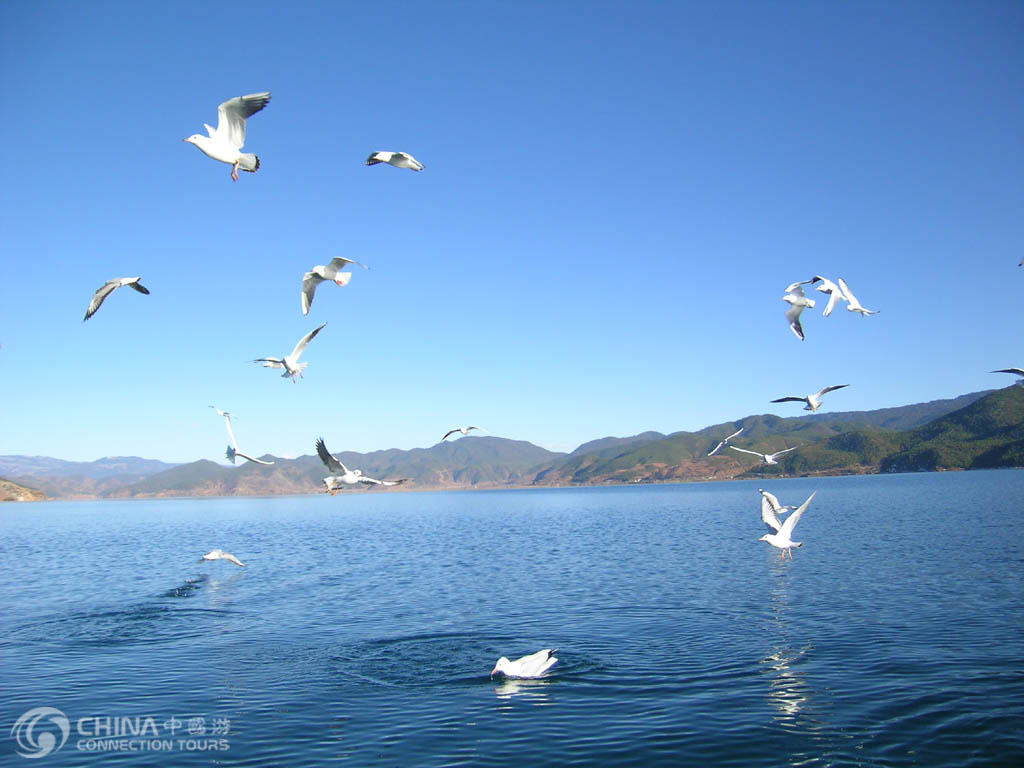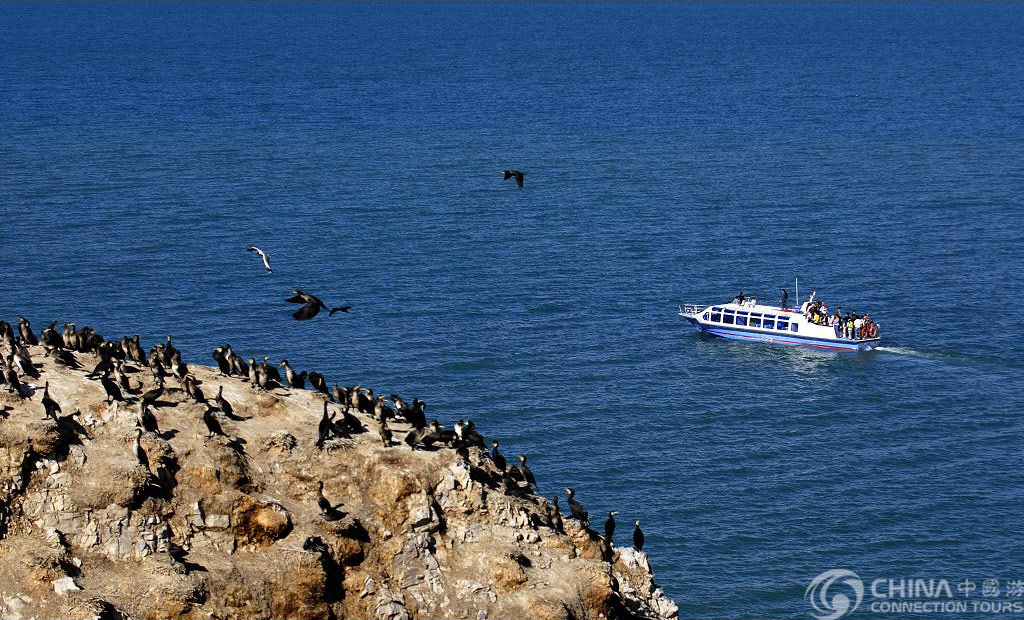 Qinghai Lake, "a blue sea" in Mongolian and Tibetan, is the largest inland salt lake in China with an area of 4,500sq.km and an altitude of 3,195m , after which Qinghai Province was named. It is fascinating in its vast expanse of misty and wavy blue water. Around the lake is the endless outstretching of grassland and rapes, wheat fields. In the distance, countless sheep, cattle and horses are grazing under the white cloud-dotted blue sky. Still farther away tower the snow-capped mountains.
Qinghai Lake, "a blue sea" in Mongolian and Tibetan, is the largest inland salt lake in China with an area of 4,500sq.km and an altitude of 3,195m , after which Qinghai Province was named. It is fascinating in its vast expanse of misty and wavy blue water. Around the lake is the endless outstretching of grassland and rapes, wheat fields. In the distance, countless sheep, cattle and horses are grazing under the white cloud-dotted blue sky. Still farther away tower the snow-capped mountains.
Qinghai Lake is a beautiful inland alpine lake in Northwest China. Over the centuries, its splendid scenery and rich aquatic resources have attracted millions of tourists and numerous valiant pioneers who admire it for its vastness, splendor and mysteriousness, landing it as a sparkling diamond set in the Qinghai Plateau.
Qinghai Lake is indeed fascinating. With luxuriant water plants and abundant supply of fish, as well as the fertile grassland around it, it used to be a place for which local nationalities contended. Roaming cattle and sheep, yak of minorities and picturesque grasslands marks today's lakeside. The local Han, Tibetans, Hui (Chinese Muslims), Mongolians, Tu, Salar live here in harmony and make concerted efforts to protect and exploit this big treasure house, striving to make it even more beautiful.
 Qinghai Lake is both a scenic spot with a mysterious coloring and a treasure house that scientists all over the world are interested in. With an average depth of 20m, the lake water contains sodium, potassium, magnesium as well as scores of salts, which are important materials for chemical, electronic, optic and pharmaceutical industries. The lake also abounds in fish. Qinghai Lake is a special product here. Local people say in midsummer fish like to swim on the water surface, and passersby can catch fish from the lake quite easily.
Qinghai Lake is both a scenic spot with a mysterious coloring and a treasure house that scientists all over the world are interested in. With an average depth of 20m, the lake water contains sodium, potassium, magnesium as well as scores of salts, which are important materials for chemical, electronic, optic and pharmaceutical industries. The lake also abounds in fish. Qinghai Lake is a special product here. Local people say in midsummer fish like to swim on the water surface, and passersby can catch fish from the lake quite easily.
Bird Island on Qinghai Lake is a sanctuary for many kinds of birds, and is one of China's eight key bird nature reserves. It has its own protection organization for bird resources, and provides habitats for over 100,000 migrants from south China and Southeast Asia. Such a density is rare in the world. May, June, and July are the best months for visitors to go and see the birds against a tranquil, aquatic blue backdrop.

